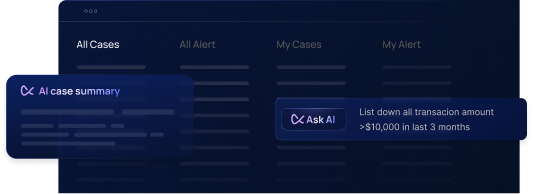In today's digital world, knowing who your customers are is more crucial than ever. Verifying who is behind the screen can protect your business and your customers, and depending on your industry, it may be mandatory.
As of November 2021, there were 26,346 fintech startups, which is almost twice as many as there were only two years earlier. Each of these companies offers different services to its customers, from banking to savings, lending, payments, money transfers, investing, insurance, cryptocurrency, and more.
Despite these many differences, all fintech companies have to follow KYC (Know Your Customer) rules and regulations.
What is KYC?
KYC is a set of regulations that helps businesses and financial institutions determine customer eligibility, assess potential risks, and ensure the authenticity of identities. These measures aim to prevent financial crimes such as money laundering and terrorist financing.
The necessity to verify customers' identity stems from historical financial misconduct, leading to the establishment of KYC regulations. The initial guidelines were drafted in 1970, when the U.S. passed the Bank Secrecy Act (BSA) to prevent money laundering. Years later, after the global financial crisis of 2008 and the 9/11 terrorist attacks, important changes were made.
The regulations put in place over the years have required financial institutions to monitor customer behavior regularly. And there is no exception for not complying. Any business with customer risk, like banks, insurance companies, and creditors, must come up with a KYC strategy for working with customers.
What are the requirements to “Know Your Customer”?
The “Know Your Customer” framework has some basic steps: customer identification program (CIP), customer due diligence (CDD), enhanced due diligence (EDD), and continuous monitoring.
Customer Identification Program (CIP): Financial institutions should obtain important pieces of identifying information on a customer, including name, date of birth, address, and identification number.
Most organizations go above and beyond in their screening process. Many will ensure that their customers do not appear on government sanctions lists, politically exposed person (PEP) lists, or known terrorism lists; those who appear on those lists usually require enhanced due diligence.
At this time, other things that are being thought about include financial transactions, which are used by financial institutions to separate risky behavior from normal business activity.
A lot of this information comes from government agencies, public databases, and other third-party sources.
Customer Due Diligence (CDD): Customer due diligence is the process of sorting all the information gathered during the Customer Identification Program.
Financial institutions look at the nature and recipients of existing relationships to make sure that everything is in line with what they know about the customer.
The goal is to find out enough about a customer to confirm their identity and figure out how risky they are. Since financial crime happens quickly, organizations often look at this information to see if there are any strange jumps in activity or changes to lists of people who shouldn't do business with. Most customers pose little to no risk, but the few who do are subject to enhanced due diligence.
Enhanced Due Diligence (EDD): When a customer is thought to pose more risks than usual, companies go above and beyond to learn more about their goals. Those with political ties or connections with designated individuals may be considered high-risk. Even someone in a high-risk country can trigger a compliance red flag.
Financial institutions need to demonstrate a better understanding of their high-risk customers, identified by a standard customer due diligence program. Some of the information required to perform enhanced due diligence includes the source of wealth verification, detailed management reports, and relevant third-party research.
Continuous monitoring: Another requirement is continuous monitoring. This is an important step for financial institutions to take because a customer's situation can change very fast. Customers can be rescreened through AML and KYC processes to ensure that they are still eligible to be customers.
Why does KYC matter for financial institutions?
All financial institutions are required by the Bank Secrecy Act to follow specific anti-money laundering regulations, particularly those relating to KYC.
Initially, the regulation had a somewhat restrictive definition of what qualified as a "financial institution." The initial understanding of the regulation included banks, credit unions, insurance firms, and brokers.
However, this definition has evolved over time to include a broader range of organizations, including those that are not considered traditional financial institutions, such as fintech companies and cryptocurrency exchanges.
Simply put, any company that provides financial services must comply with KYC regulations. Failure to do so might result in serious consequences ranging from million or even billion-dollar fines to criminal prosecution.
Some benefits of KYC
In addition to meeting compliance requirements, KYC provides several benefits to financial institutions.
- Prevents money laundering
- By identifying customers' financial backgrounds and owned assets, it enables lenders to do an adequate risk assessment of those customers.
- It increases customer and business trust, which in turn draws greater investment to an economy.
- Prevents frauds caused by online or fraudulent identity schemes.
- It guards against unauthorized third-party access to customer accounts.
- Less financial crime leads to increased business activity.
What’s the difference between KYC and KYB?
Know Your Business (KYB) and Know Your Customer (KYC) procedures have many things in common. They share the main objective of following AML regulations to make financial transactions safer and prevent money laundering activities. The difference between them is in the type of customers that a financial institution is dealing with.
KYC regulations and processes are appropriate when the customer or user is a known person. In addition, KYB regulations have been created to deal with situations where the customer is any kind of corporate or business entity. Any business providing B2B services will be required to follow KYB regulations.
Managing KYC today
Numerous financial criminals have had their offenses downplayed and idealized throughout history. Due to these crimes, political figures and banks have even benefited financially and in terms of power. As more is learned about financial crime and the operations it often funds, laws are being made and enforced to stop the benefits of hiding these criminals. Financial crimes, which are frequently referred to as "non-violent crimes," lead to victims of drug abuse, violent crime, terrorism, and human trafficking. As these truths come to light, financial institutions are now held responsible for the accurate identification of the customers they serve.
As criminals use technology to commit more advanced crimes, the regulations will be broadened and amended to include these new techniques. Financial institutions will have to follow the rules or risk getting fined a lot and being charged with crimes.
In conclusion
The "Know Your Customer" process is not a once-off exercise. To be truly compliant, financial institutions need to have an ongoing monitoring program that keeps track of customer transactions and changes in account ownership or ownership.
Here at Flagright, we understand the unique challenges fintechs face in order to comply with KYC regulations while mitigating risk. So, we made sure that all of our solutions, like KYC/KYB orchestration, were made with these challenges in mind. This lets you access many of the best providers through a single, unified API. In addition to real-time transaction monitoring, dynamic risk profiling, sanctions screening, and blockchain analytics, all of which operate in tandem to create the best-in-class AML compliance infrastructure.
Contact us here to schedule a free demo.




.svg)























